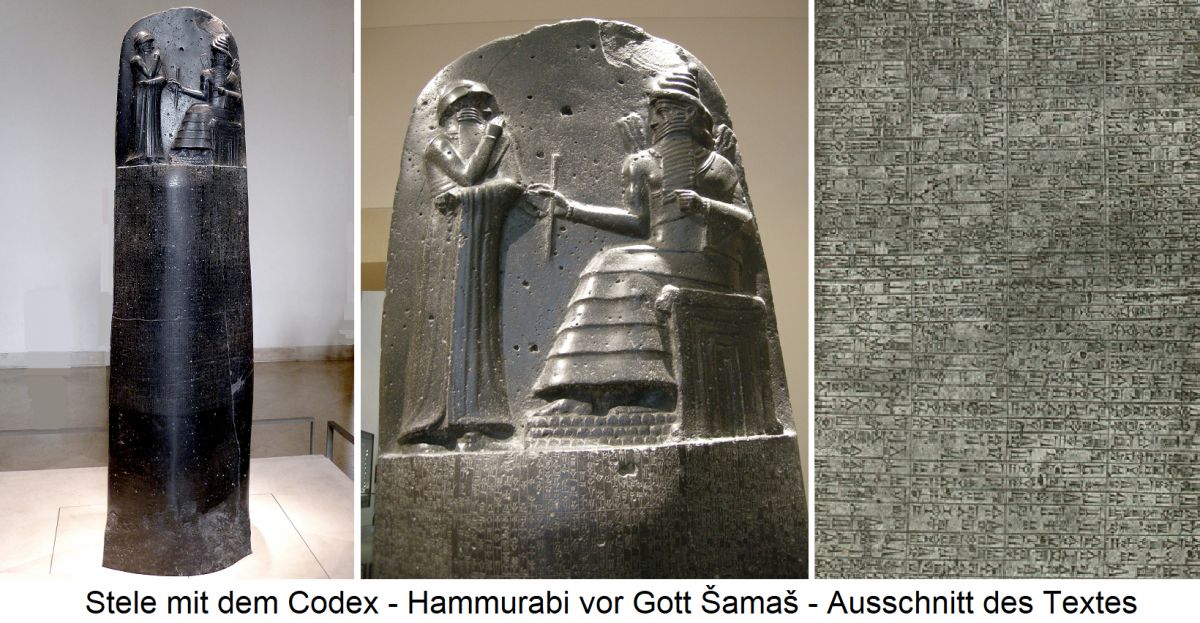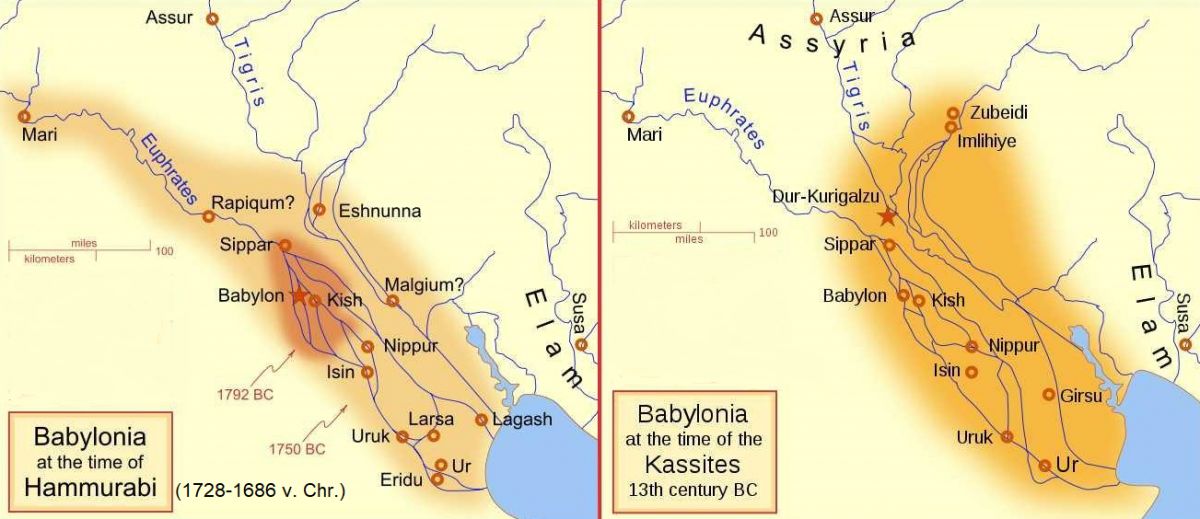Hammurabi I or Hammurapi I (1728-1686 BC) was the sixth king of the 1st Dynasty of Babylon with the title "King of Sumer and Akkad". He unified Babylonia and conquered the city-state of Mari, the centre of an empire (roughly modern-day Syria, northwest of Abu Kamal) and a large part of the Assyrian Empire in 1692 BC. Hammurabi's empire extended over almost the entire Mesopotamia (Near Eastern landscape between the Euphrates and Tigris rivers) as far as the Persian Gulf. In 1901, a 2.25 metre high diorite stele was found in Susa in the south-west of modern-day Iran near the Iraqi border in the province of Khuzestan on the edge of the modern-day city of Shush, which is now on display in the Louvre in Paris. It had already been taken to Susa in antiquity and contains a large part of the laws he enacted under private and public law.

Legal texts
This collection of laws, known as the "Codex Hammurabi", is one of the oldest in the world. Among other things, it contains a hymn of praise to wine: Wine is one of the most precious gifts on earth. It therefore demands love and respect, and we must show it respect. The relief at the head of the stele shows Hammurabi receiving the code of law from the sun god Šamaš (Shamash). The text, which is divided into three sections, consists of around 8,000 words written in 51 columns of around 80 lines each in ancient Babylonian monumental kelic script.
In 282 legal clauses and an epilogue of around 400 lines, the righteousness of the king is praised and subsequent rulers are called upon to follow the legal clauses. The legal clauses make up around 80% of the total text and relate to constitutional law, property law, law of obligations, marriage law, inheritance law, criminal law, tenancy law and cattle breeding and slavery law. The Codex Hammurabi is often referred to as the "oldest law of mankind", but this is disputed among experts because older codices have since been found.

Provisions on wine
However, the section on wine is actually considered to be the oldest wine law in the world. It contains provisions on yields and regulations on sales with price ceilings for wine taverns and merchants. Strict penalties are imposed for violating regulations. The barmaids were threatened with being thrown into the water if they deliberately cheated when calculating the bill. Priestesses were forbidden to consume wine in public. If they visited a wine house and drank wine, they were threatened with death by burning. The Codex Hammurabi also contains guidelines for the production of beer. See also under Ancient wines and drinking culture.
Stele: From Mbzt - Own work, CC BY 3.0, Link
Stele headboard: By Sailko, CC BY 2.5, Link
Maps: Bibelwissenschaft.de
Voices of our members

The wein.plus encyclopaedia is a comprehensive, well-researched reference work. Available anytime and anywhere, it has become an indispensable part of teaching, used by students and myself alike. Highly recommended!
Dominik Trick
Technischer Lehrer, staatl. geprüfter Sommelier, Hotelfachschule Heidelberg